Đề thi Ielts Writing tháng 1/2020
Cấu trúc bài viết
Introduction: Paraphrase lại nội dung câu hỏi
Overview: Nêu số bước trong biểu đồ, cũng như là bước đầu và bước cuối của biều đồ.
• Số bước: 9
• Bước đầu: Thu hoạch ripe red pods.
• Bước cuối: Tạo ra sô cô la thành phẩm.
Body 1: Mô tả 5 bước đầu của biểu đồ. Năm bước này được tách ra vì các bước này có thể được coi là các bước sơ chế hạt cacao.
1. Bước 1 + 2: Thu hoạch hạt Cacao trắng từ các trái đỏ chín trên cây ca cao.
2. Bước 3: Lên men hạt cacao trắng.
3. Bước 4: Phơi nắng hạt ca cao trắng đã lên men.
4. Bước 5: Rang hạt ca cao đã phơi.
Body 2: Mô tả 4 bước cuối của biểu đồ.
• Bước 6: Nhân của các hạt sẽ được tách ra khỏi vỏ.
• Bước 7: Các hạt sẽ được “conched” để tạo nên hỗn hợp sô cô la lỏng.
• Bước 8: Sô cô la lỏng được đổ vào khuôn.
• Bước 9: Sô cô la hoàn thiện.
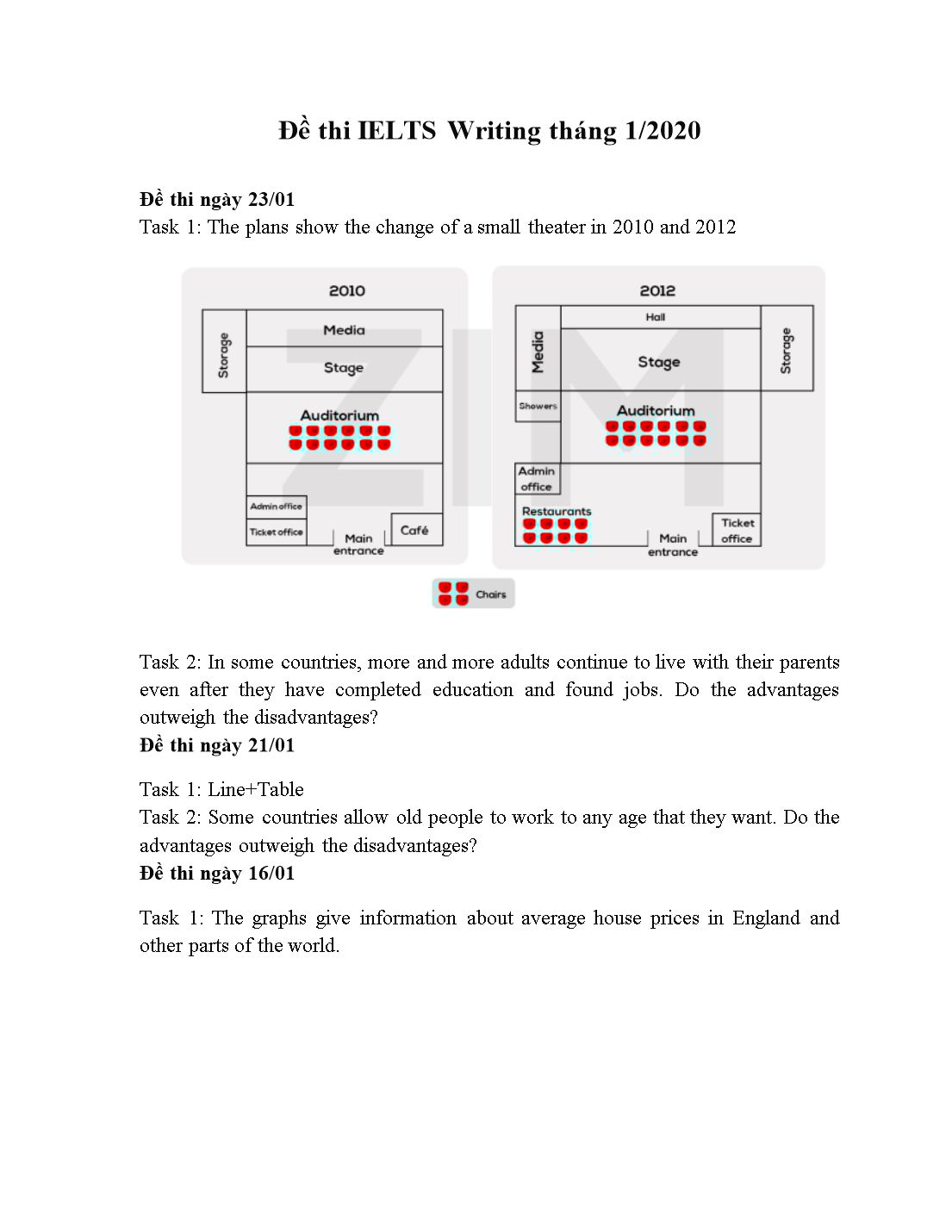
Trang 1
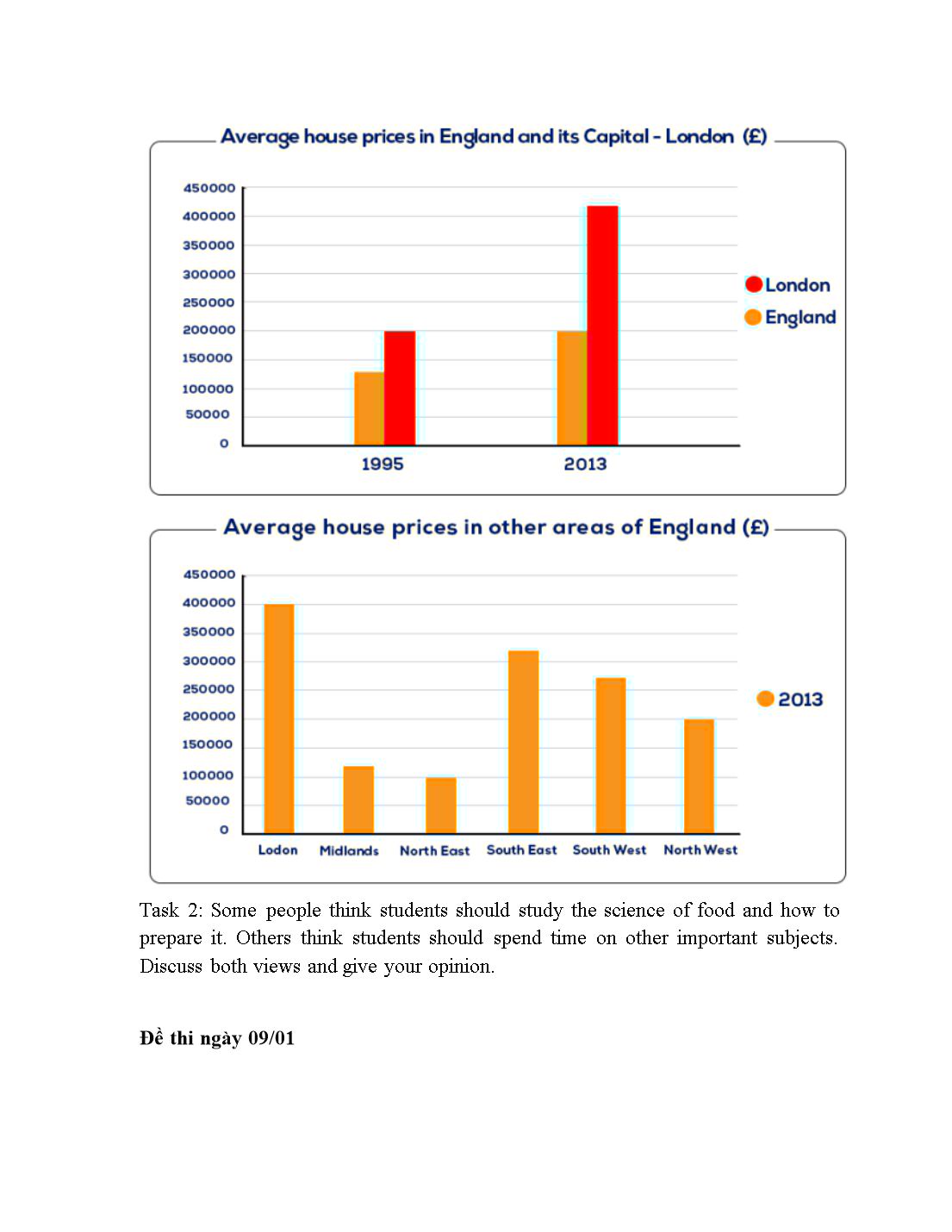
Trang 2
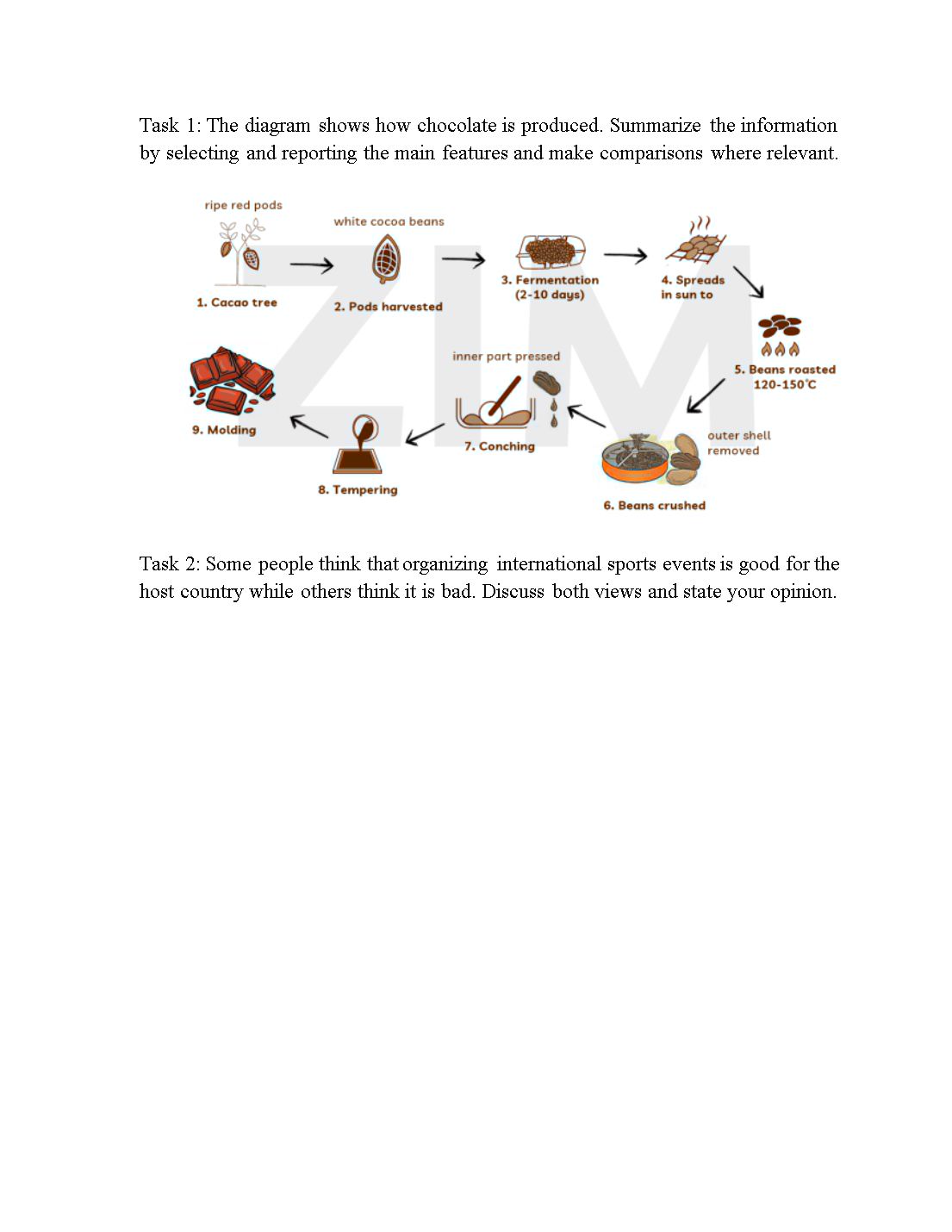
Trang 3
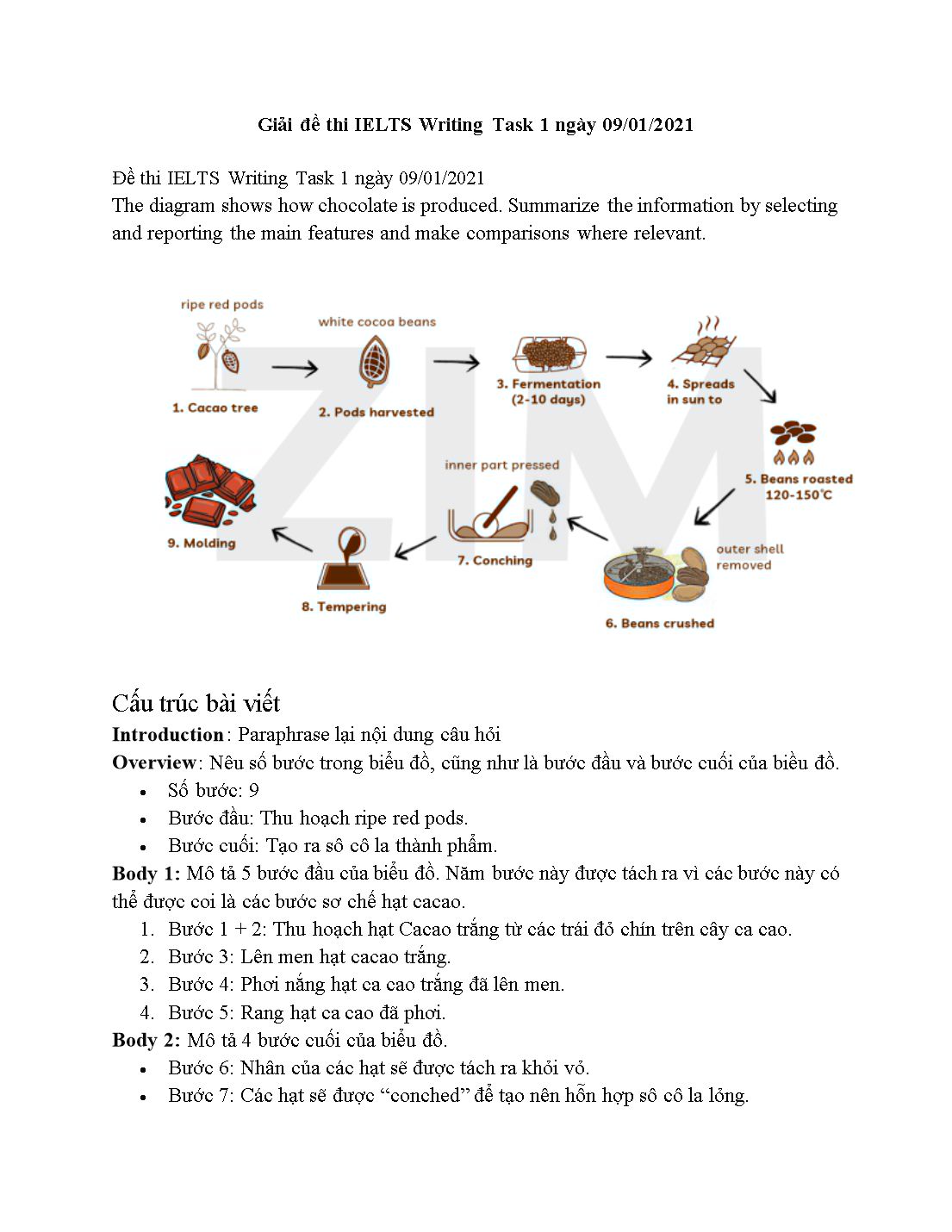
Trang 4
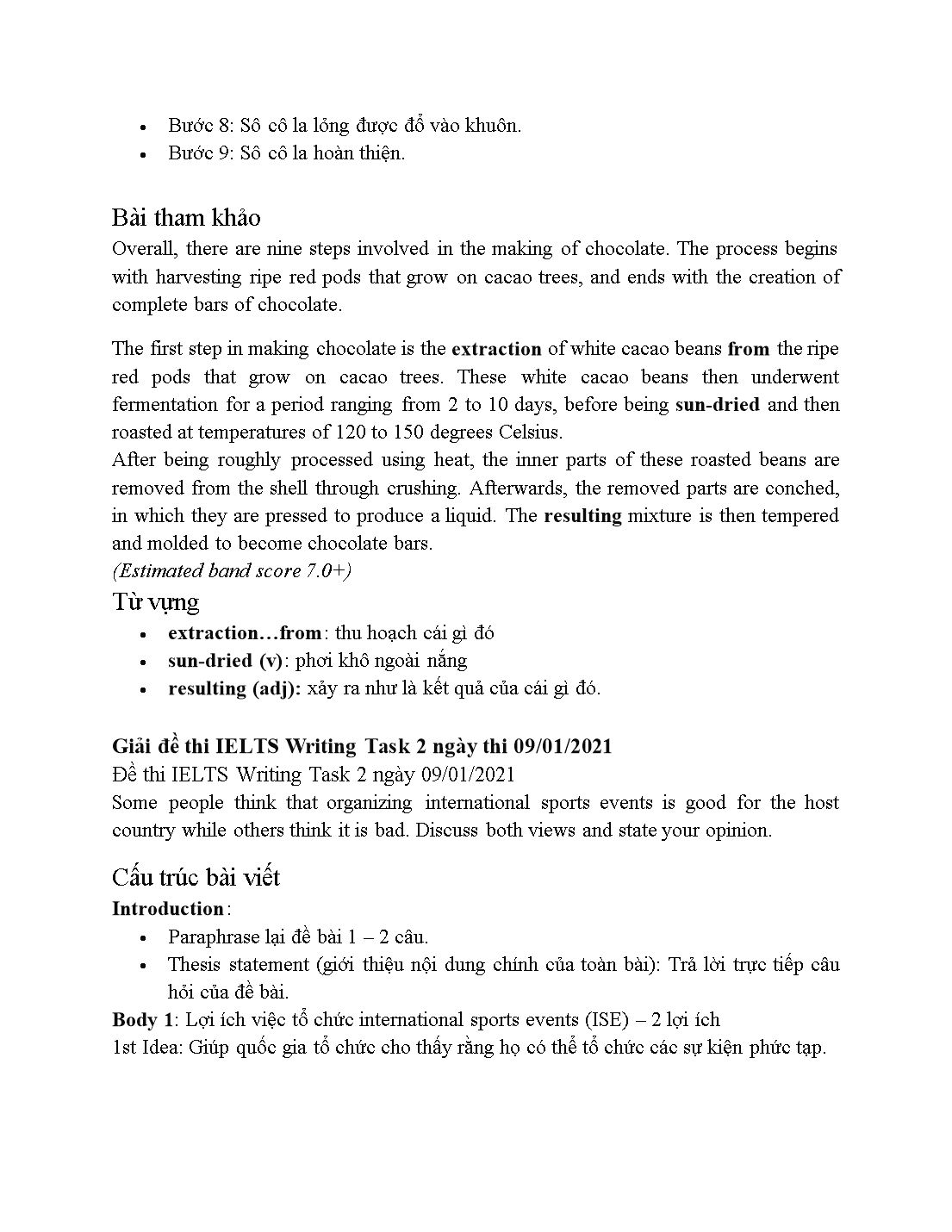
Trang 5
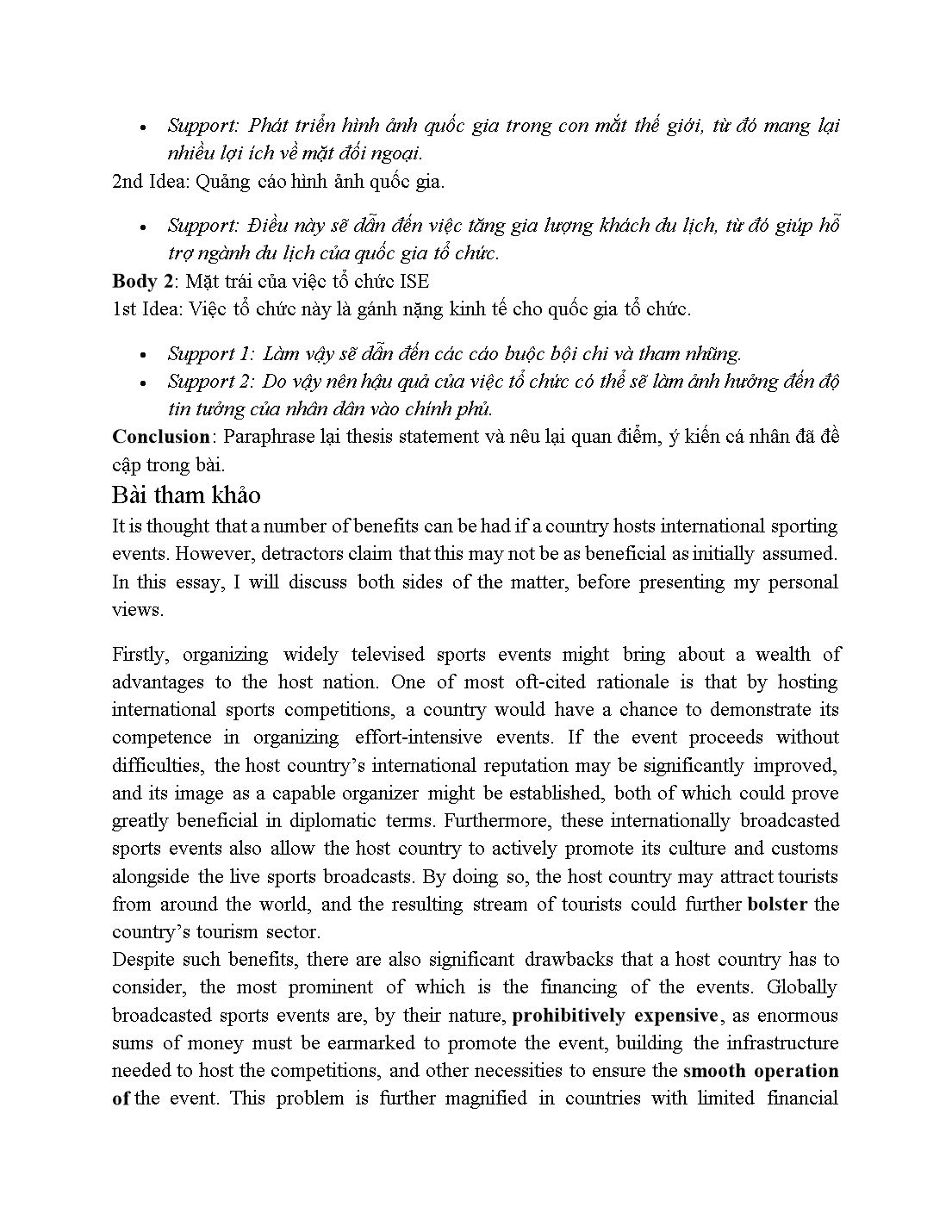
Trang 6
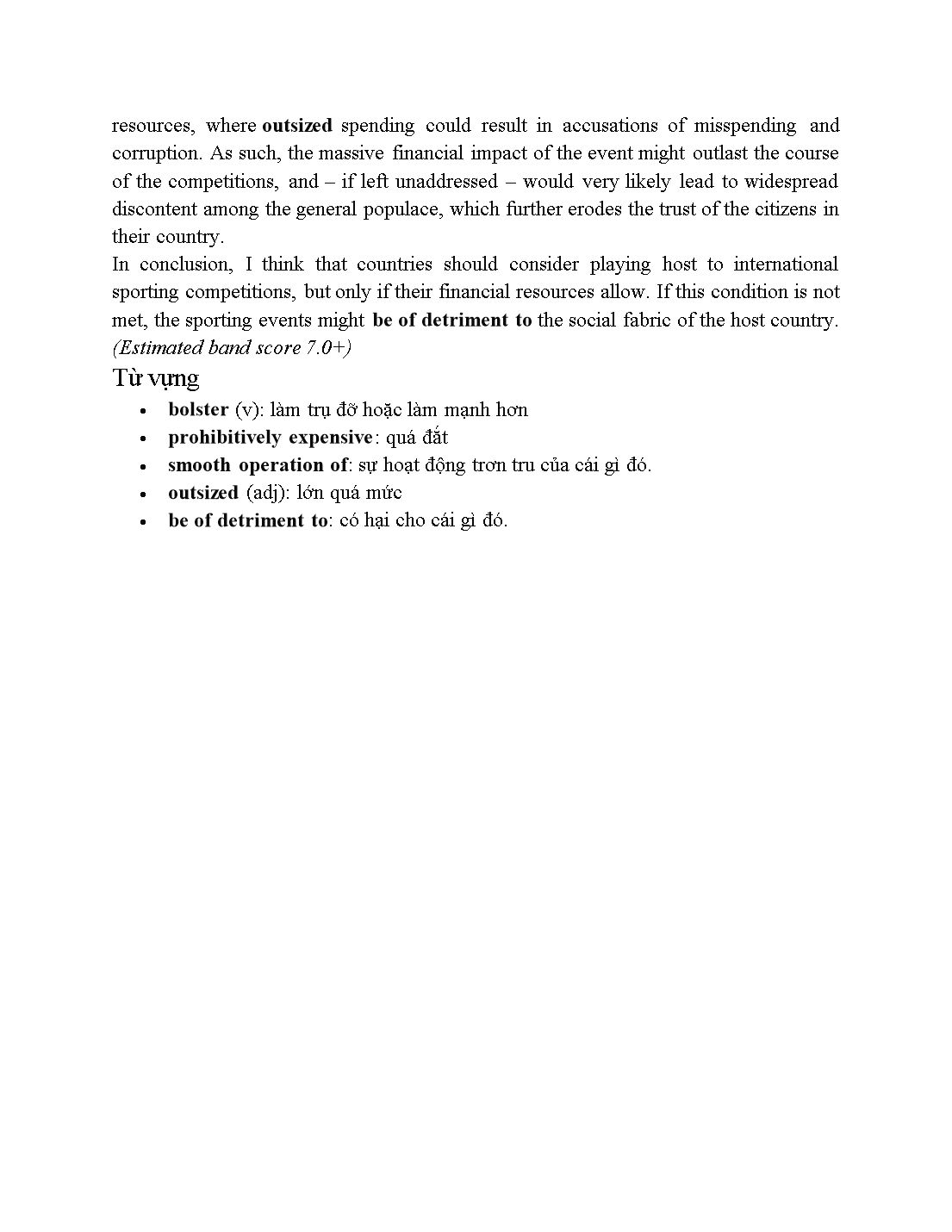
Trang 7
Tóm tắt nội dung tài liệu: Đề thi Ielts Writing tháng 1/2020
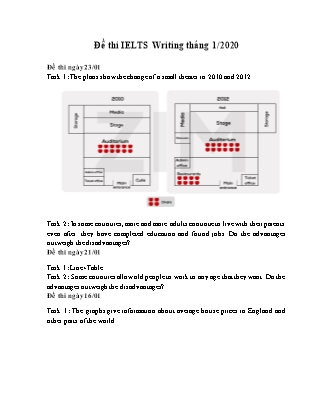
Đề thi IELTS Writing tháng 1/2020 Đề thi ngày 23/01 Task 1: The plans show the change of a small theater in 2010 and 2012 Task 2: In some countries, more and more adults continue to live with their parents even after they have completed education and found jobs. Do the advantages outweigh the disadvantages? Đề thi ngày 21/01 Task 1: Line+Table Task 2: Some countries allow old people to work to any age that they want. Do the advantages outweigh the disadvantages? Đề thi ngày 16/01 Task 1: The graphs give information about average house prices in England and other parts of the world. Task 2: Some people think students should study the science of food and how to prepare it. Others think students should spend time on other important subjects. Discuss both views and give your opinion. Đề thi ngày 09/01 Task 1: The diagram shows how chocolate is produced. Summarize the information by selecting and reporting the main features and make comparisons where relevant. Task 2: Some people think that organizing international sports events is good for the host country while others think it is bad. Discuss both views and state your opinion. Giải đề thi IELTS Writing Task 1 ngày 09/01/2021 Đề thi IELTS Writing Task 1 ngày 09/01/2021 The diagram shows how chocolate is produced. Summarize the information by selecting and reporting the main features and make comparisons where relevant. Cấu trúc bài viết Introduction: Paraphrase lại nội dung câu hỏi Overview: Nêu số bước trong biểu đồ, cũng như là bước đầu và bước cuối của biều đồ. Số bước: 9 Bước đầu: Thu hoạch ripe red pods. Bước cuối: Tạo ra sô cô la thành phẩm. Body 1: Mô tả 5 bước đầu của biểu đồ. Năm bước này được tách ra vì các bước này có thể được coi là các bước sơ chế hạt cacao. Bước 1 + 2: Thu hoạch hạt Cacao trắng từ các trái đỏ chín trên cây ca cao. Bước 3: Lên men hạt cacao trắng. Bước 4: Phơi nắng hạt ca cao trắng đã lên men. Bước 5: Rang hạt ca cao đã phơi. Body 2: Mô tả 4 bước cuối của biểu đồ. Bước 6: Nhân của các hạt sẽ được tách ra khỏi vỏ. Bước 7: Các hạt sẽ được “conched” để tạo nên hỗn hợp sô cô la lỏng. Bước 8: Sô cô la lỏng được đổ vào khuôn. Bước 9: Sô cô la hoàn thiện. Bài tham khảo Overall, there are nine steps involved in the making of chocolate. The process begins with harvesting ripe red pods that grow on cacao trees, and ends with the creation of complete bars of chocolate. The first step in making chocolate is the extraction of white cacao beans from the ripe red pods that grow on cacao trees. These white cacao beans then underwent fermentation for a period ranging from 2 to 10 days, before being sun-dried and then roasted at temperatures of 120 to 150 degrees Celsius. After being roughly processed using heat, the inner parts of these roasted beans are removed from the shell through crushing. Afterwards, the removed parts are conched, in which they are pressed to produce a liquid. The resulting mixture is then tempered and molded to become chocolate bars. (Estimated band score 7.0+) Từ vựng extractionfrom: thu hoạch cái gì đó sun-dried (v): phơi khô ngoài nắng resulting (adj): xảy ra như là kết quả của cái gì đó. Giải đề thi IELTS Writing Task 2 ngày thi 09/01/2021 Đề thi IELTS Writing Task 2 ngày 09/01/2021 Some people think that organizing international sports events is good for the host country while others think it is bad. Discuss both views and state your opinion. Cấu trúc bài viết Introduction: Paraphrase lại đề bài 1 – 2 câu. Thesis statement (giới thiệu nội dung chính của toàn bài): Trả lời trực tiếp câu hỏi của đề bài. Body 1: Lợi ích việc tổ chức international sports events (ISE) – 2 lợi ích 1st Idea: Giúp quốc gia tổ chức cho thấy rằng họ có thể tổ chức các sự kiện phức tạp. Support: Phát triển hình ảnh quốc gia trong con mắt thế giới, từ đó mang lại nhiều lợi ích về mặt đối ngoại. 2nd Idea: Quảng cáo hình ảnh quốc gia. Support: Điều này sẽ dẫn đến việc tăng gia lượng khách du lịch, từ đó giúp hỗ trợ ngành du lịch của quốc gia tổ chức. Body 2: Mặt trái của việc tổ chức ISE 1st Idea: Việc tổ chức này là gánh nặng kinh tế cho quốc gia tổ chức. Support 1: Làm vậy sẽ dẫn đến các cáo buộc bội chi và tham nhũng. Support 2: Do vậy nên hậu quả của việc tổ chức có thể sẽ làm ảnh hưởng đến độ tin tưởng của nhân dân vào chính phủ. Conclusion: Paraphrase lại thesis statement và nêu lại quan điểm, ý kiến cá nhân đã đề cập trong bài. Bài tham khảo It is thought that a number of benefits can be had if a country hosts international sporting events. However, detractors claim that this may not be as beneficial as initially assumed. In this essay, I will discuss both sides of the matter, before presenting my personal views. Firstly, organizing widely televised sports events might bring about a wealth of advantages to the host nation. One of most oft-cited rationale is that by hosting international sports competitions, a country would have a chance to demonstrate its competence in organizing effort-intensive events. If the event proceeds without difficulties, the host country’s international reputation may be significantly improved, and its image as a capable organizer might be established, both of which could prove greatly beneficial in diplomatic terms. Furthermore, these internationally broadcasted sports events also allow the host country to actively promote its culture and customs alongside the live sports broadcasts. By doing so, the host country may attract tourists from around the world, and the resulting stream of tourists could further bolster the country’s tourism sector. Despite such benefits, there are also significant drawbacks that a host country has to consider, the most prominent of which is the financing of the events. Globally broadcasted sports events are, by their nature, prohibitively expensive, as enormous sums of money must be earmarked to promote the event, building the infrastructure needed to host the competitions, and other necessities to ensure the smooth operation of the event. This problem is further magnified in countries with limited financial resources, where outsized spending could result in accusations of misspending and corruption. As such, the massive financial impact of the event might outlast the course of the competitions, and – if left unaddressed – would very likely lead to widespread discontent among the general populace, which further erodes the trust of the citizens in their country. In conclusion, I think that countries should consider playing host to international sporting competitions, but only if their financial resources allow. If this condition is not met, the sporting events might be of detriment to the social fabric of the host country. (Estimated band score 7.0+) Từ vựng bolster (v): làm trụ đỡ hoặc làm mạnh hơn prohibitively expensive: quá đắt smooth operation of: sự hoạt động trơn tru của cái gì đó. outsized (adj): lớn quá mức be of detriment to: có hại cho cái gì đó.
File đính kèm:
 de_thi_ielts_writing_thang_12020.docx
de_thi_ielts_writing_thang_12020.docx

